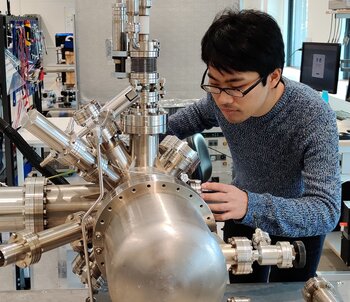Scienta Omicron Spectrometers: From a User´s Point of View
I am Takahiro Hashimoto, who started working in Scienta Omicron in Uppsala, Sweden, as a development engineer in August 2020. I am very glad to join the company, which has developed groundbreaking instruments for surface science and nanotechnology.
I received my Ph.D. degree in Science in March 2020 from The Graduate School of Frontier Sciences, at The University of Tokyo. I worked with Prof. Shik Shin, who is particularly known for laser-based Angle-Resolved Photoemission Spectroscopy (ARPES).
“To observe fine electronic structures in superconductors, I mainly used a laser based ARPES system with the capability of ultrahigh resolution and ultralow temperature. This cutting-edge instrument could not be realized without the analyzer of Scienta Omicron.”
I also have a lot of experience in using synchrotron facilities including the Hiroshima Synchrotron Radiation Center, HiSOR (Hiroshima, Japan), Diamond Light Source (Oxfordshire, UK), and BESSY II (Berlin, Germany). Our campus is located at Kashiwa city in Chiba prefecture, which is next to Tokyo. The city is modern but natural and perfect for research activities.
It is very exciting to learn about instruments from a new perspective in the company, and I hope that my experience as a user will help produce good products. Moreover, I look forward to strengthening the connection between users and Scienta Omicron as well as between Japan and Sweden. I needed to delay my travel to Sweden due to the coronavirus, and I think it has been very tough this year for many researchers as well. The situation is still constantly changing, but I hope that I can help ramp up research when things get normal.
Related Publications
- Hashimoto, T., Ota, Y., Yamamoto, H.Q. et al. Superconducting gap anisotropy sensitive to nematic domains in FeSe. Nat Commun 9, 282 (2018).
DOI: https://doi.org/10.1038/s41467-017-02739-y
- Takahiro Hashimoto, Yuichi Ota, Akihiro Tsuzuki, et al., Bose-Einstein condensation superconductivity induced by disappearance of the nematic state. Sci. Adv. 6, eabb9052 (2020).

